
2013: Year of the Selfie
Like kudzu, transplanted to the U.S. southeast from Japan, or cane toads, imported to Australia from Hawaii, the so-called “selfie,” short for photographic self-portrait, has found an environment that fosters its unchecked growth: the combination of cellphone cameras and webcams, the internet, and social media. Thus it constitutes a classic example of what the late Neil Postman dubbed “media ecology.”
Improbably, the word itself became the Oxford Dictionary’s “word of the year” for 2013, by unanimous vote of that enterprise’s panel of judges. This represents the first time that a photography-related word has had that distinction. They trace its first usage back to 2002 at an Aussie internet forum, defining it thus: “a photograph that one has taken of oneself, typically one taken with a smartphone or webcam and uploaded to a social media website.”

Sydney Morning Herald poll on Obama selfie, screenshot, 2013-12-10.
Pres. Barack Obama generated as many headlines worldwide for taking a selfie at the December 10 memorial celebration in Johannesburg for Nelson Mandela as for shaking the hand of Raul Castro there (prompting the Sydney Morning Herald to conduct a poll of readers on the appropriateness of the selfie, but not of the handshake). With that, the selfie can be said to have achieved official recognition at the highest levels of government internationally.
This makes it worthwhile to trace the metastasis of this form of photographic imagery. Having reviewed the first known instance of a project based on this idea, over 40 years ago, I’ve had the opportunity to watch it grow ― steadily at first, then exponentially, and now explosively.
Pioneer of the Selfie
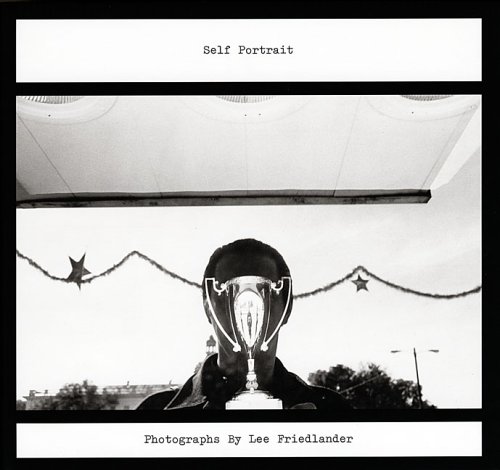
Lee Friedlander, “Self Portrait” (1970), cover
On October 29, 1970, in my “Latent Image” column in the Village Voice, I reviewed Lee Friedlander’s first monograph, the self-published Self Portrait, as follows:
The 40-odd photographs in Lee Friedlander’s Self Portrait (Haywire Press, $5 paperback) are, as Friedlander notes, “a peripheral extension of my work.”
“They began as straight portraits,” he continues, “but soon I was finding myself at times in the landscape of my photography. I might call myself an intruder. . . .”
With the exception of a few straight self-portraits, Friedlander is indeed an “intruder” in these images, one whose presence is registered by fragmented reflections or cast shadows. He plays various games with this off-beat form of self-portraiture: a cheering statue crowns the shadow of his head, an electrical socket sits within his shadow where his heart would be, and so on.
They are weird and witty images, frequently surreal, sometimes a little spooky; they all have a casual deftness which is relaxed and revealing. Self Portrait is not — and I think Friedlander would agree to this — a major project; it is, rather, a curious and engaging sidetrack, limited but valuable, which Friedlander has explored thoroughly without belaboring the point. The result is a delightful book which wears very well; I’ve been leafing through it for three or four months now, and it turns me on every time.
One hundred copies of the first edition have been hardbound and signed by Friedlander, and include an original print. The price of these is unspecified, but they are available from Haywire Press at 44 South Mountain Road, New City New York 10956.
Backstory of the Selfie
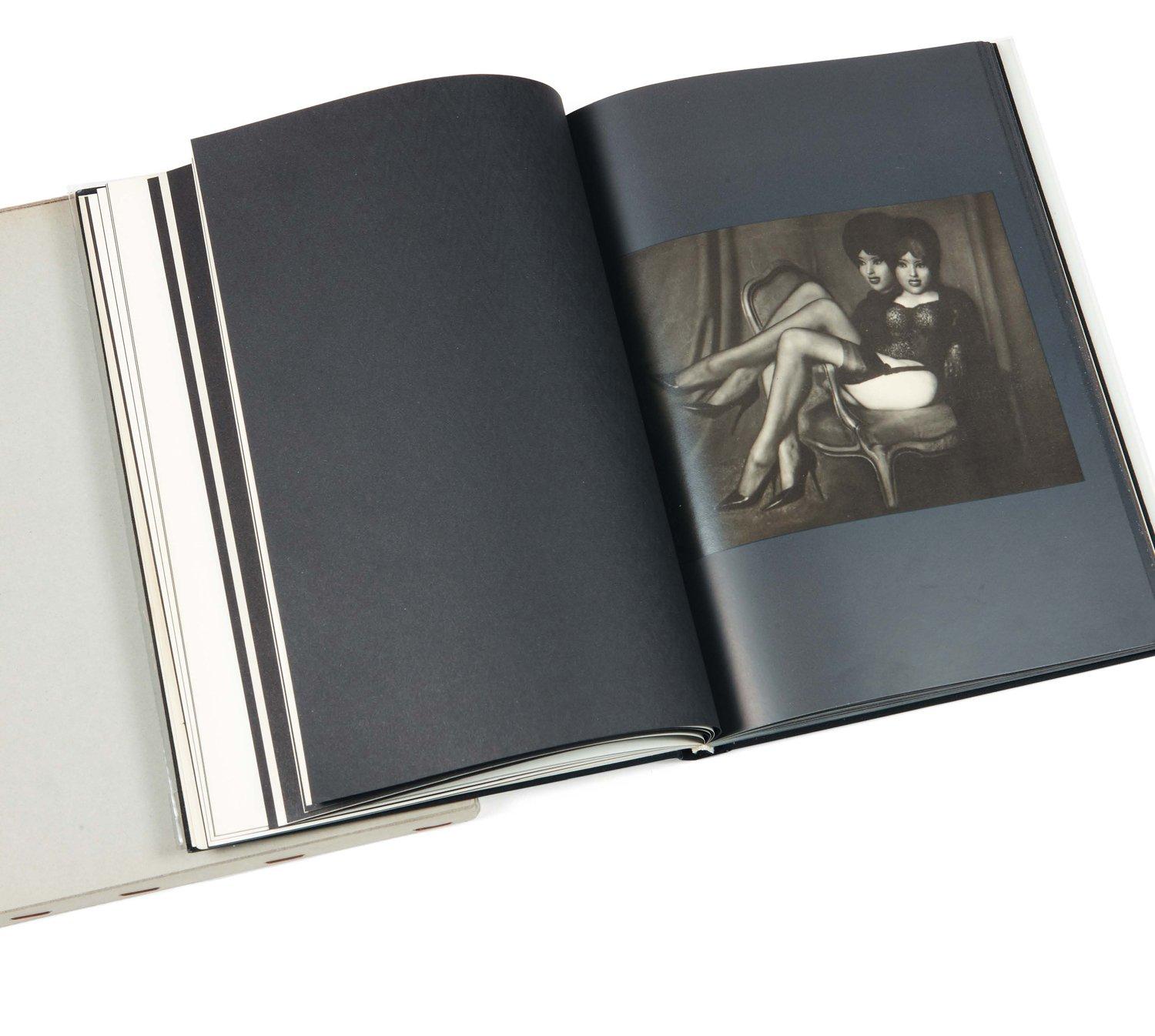
Pierre Molinier, “lui-même” (1972), cover
No one would have considered self-portraits by photographers uncommon; all the early pioneers of the medium made them ― Daguerre, Talbot, Le Secq, more ― and those who came after often followed suit. But even those who made more than a few, such as Man Ray, never treated them as a body of work in and of themselves; if they published and/or exhibited them, they did so as one-offs within selections of images of other subjects and kinds.
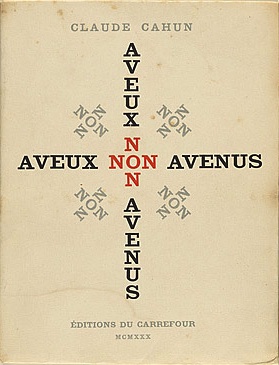
Claude Cahun, “Aveux non avenus” (1930), cover
We now know of a few exceptions to the above statement. The staged images in Claude Cahun’s Aveux non avenus of 1930 (its title translates roughly as “retracted confessions”), and samplings of painter Pierre Molinier’s auto-erotic photocollages, begun circa 1950, had circulated in Europe. But Cahun’s lone monograph, published in an edition of 500 copies, fell into obscurity, and the first book-length collection of Molinier’s images, Pierre Molinier, lui-même did not appear until 1972, also in a limited edition (from Germany), and then went unpublished in the States. Fair to say that few in the international photo world knew of the work of either in 1970. Which makes such a project by a photographer of already substantial repute, like Friedlander, sui generis for all intents and purposes.
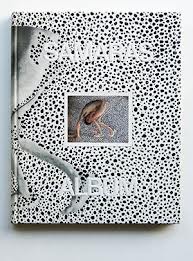
Lucas Samaras, “Samaras Album” (1971), cover
Friedlander’s little book effectively legitimated the photographer’s inclusion of his or her own visual presence in serious images. Lucas Samaras’s Samaras Album, the first collection of his “auto-Polaroids,” appearing a year later, iced the cake, becoming the first set of photographic self-portraits widely discussed by critics of art, legitimating such a project for contemporary artists.
More and more such work began to appear. By 1975, in fact, I’d identified and published essays on what I called the autobiographical mode in photography, whose primary subsets I proposed as self-portraiture, the diary, and the family album. (You’ll find them reprinted in my 1996 book Tarnished Silver: After the Photo Boom.) Therein I described Friedlander’s book as “[t]he first public presentation of an extensive body of photographic self-portraiture,” adding “This archetypal volume is for me Friedlander’s strongest and most honest piece of work, his least snide ― though perhaps his bleakest ― statement.”

Cindy Sherman, “The Complete Untitled Film Stills” (2003), cover
A few years after that, in 1977, Cindy Sherman would begin her “Untitled Film Stills” series. By then, photographers and artists like Arno Rafael Minkkinen, Donna-Lee Phillips, Les Krims, Paul Diamond, Melissa Shook, Arthur Tress, Hannah Wilke, Ana Mendiata, and hundreds of others had initiated and/or completed multi-image projects in which they appeared in their own photographs. Those works got shown in museums and galleries worldwide, appeared in art and photo magazines, made their way into general-audience publications, and became part of the contemporary visual environment.
Three Decades On
In 1998, almost 30 years after the first edition came out, Friedlander issued a new edition of Self Portrait (D.A.P./Fraenkel Gallery), which I described as follows in a review that same year for European Photography:
. . . Since its birth, this book has become a cornerstone in the tradition of photographic self-portraiture and a key project in the larger autobiographical mode of which that form is a subset. At the same time, it is in no sense confessional or intimate and (aside from what it discloses about Friedlander’s wit and visual intelligence) only minimally self-revelatory. In spirit, it’s no bildungsroman, akin instead to André Malraux’s rigorously self-effacing Anti-Memoirs, whose premise was, ” . . . what do I care about what matters only to me?”
Its primary concern is visual and intellectual play ― in the vigorously experimental sense of the word ― with the most charged and intricately problematic subject matter for any artist: the outward appearance of the self and the constant flux of identity. Others would subsequently heap theory and critical apparatus onto such inquiry, building whole careers around it. Friedlander said what he had to say ― or, in the locution he’d probably prefer, showed what he had to show — on that subject, and moved on, towards an ever more refined disengagement from subject matter, with his Sonoran desert scapes as a logical end point. Indeed, pair that book with this one and you have the summation of what Friedlander’s about, so it’s good to have this debut volume back with us.
The Selfie Ascendant
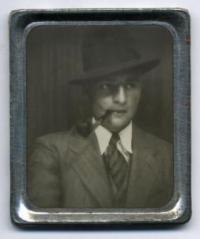
Photomatic photo-booth portrait, ca. 1935
Yet, for all that, actual self-portraits made within the context of vernacular photography ― that is, pictures of themselves made intentionally as such by amateur photographers ― remained relatively rare. The notable exception: photo-booth images, created with the device that I called “the most accessible, most ubiquitous, and most widely employed instrument of self-portraiture in the history of humankind: a tool devised for that purpose and no other.” (In that 1975 essay on the autobiographical mode).
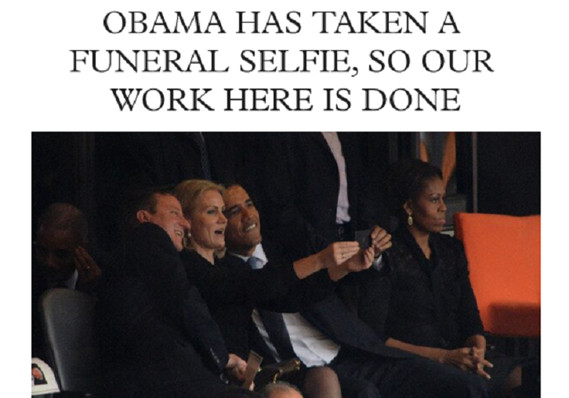
Selfies at Funerals, screenshot, 12-10-13
Leaving aside also those images in which the photographer’s shadows or reflections or body parts ― thumb, foot, etc. ― appear accidentally, selfies do not form a major category in amateur analog photography. Even the frequent use of Polaroid cameras to generate homemade porn did not significantly reduce their statistical scarcity. Nor did the introduction of lightweight, idiot-proof point-and-shoot cameras, which certainly made it physically easier to hold the camera at arm’s length while clicking its shutter release.

United Airlines, “Friendly Skies” ad campaign, fall 2013.
So when a Tumblr blog that concentrates on a single subset of the selfie, Selfies at Funerals, declares its mission fulfilled with the publication of the Obama-Mandela selfie (even though, technically, the event didn’t qualify as a funeral), and United Airlines promotes itself with a fall 2013 print ad involving a picture of man taking a selfie in some exotic locale, we have reached either the apotheosis of the photographic self-portrait or the converse: its absorption into everyday life by the citizenry at large, with a consequent dissipation of whatever radical charge it held as a a provocation in both form and content in 1970. (Or both.)
(Part 1 I 2)
•
This post supported by a donation from Yoshio Kishi.






I’d like to ask why the ‘first’ selfie is not attributed to Hippolyte Bayard whose 1840 self portrait makes his image 130 years before Coleman’s ’40 years ago’ claim.
Happy to answer.
If you actually read my post, you’ll discover that I did not attribute the first photographic self-portrait to Lee Friedlander 40 years ago. Difficult to imagine any writer on photography who’d make such a foolish statement. Indeed, as I wrote, “all the early pioneers of the medium made them [self-portraits] ― Daguerre, Talbot, Le Secq, more ― and those who came after often followed suit. But even those who made more than a few, such as Man Ray, never treated them as a body of work in and of themselves.”
I then indicated that, to my knowledge, Friedlander was one of the first to do so, and certainly the first whose self-portrait work became a reference point in the discourse around photography. I don’t know how I could have made that any clearer.
Meanwhile, your assertion that one should credit Hippolyte Bayard’s 1840 “Self-portrait as a drowned man” as the first photographic self-portrait has no basis in fact. This leaves out works from the preceding year, 1839, by Robert Cornelius and Henry Fitz Jr., among others.
My turn to ask why you’ve so drastically misrepresented my statements, using incorrect data to do so.
H-m-m-m-m … Thanks for your response. I was probably considering the idea of the ‘selfie’ as a deliberate conceptual statement – maybe even and art statement – not, as a mere portrait of self which is what everyone has done/does.
In my reading of your statement about Friedlander and your review of his photographs I missed the key word ‘project’. You are right – he does stand alone in that territory.
My error – led me to what I now agree is an incorrect response.